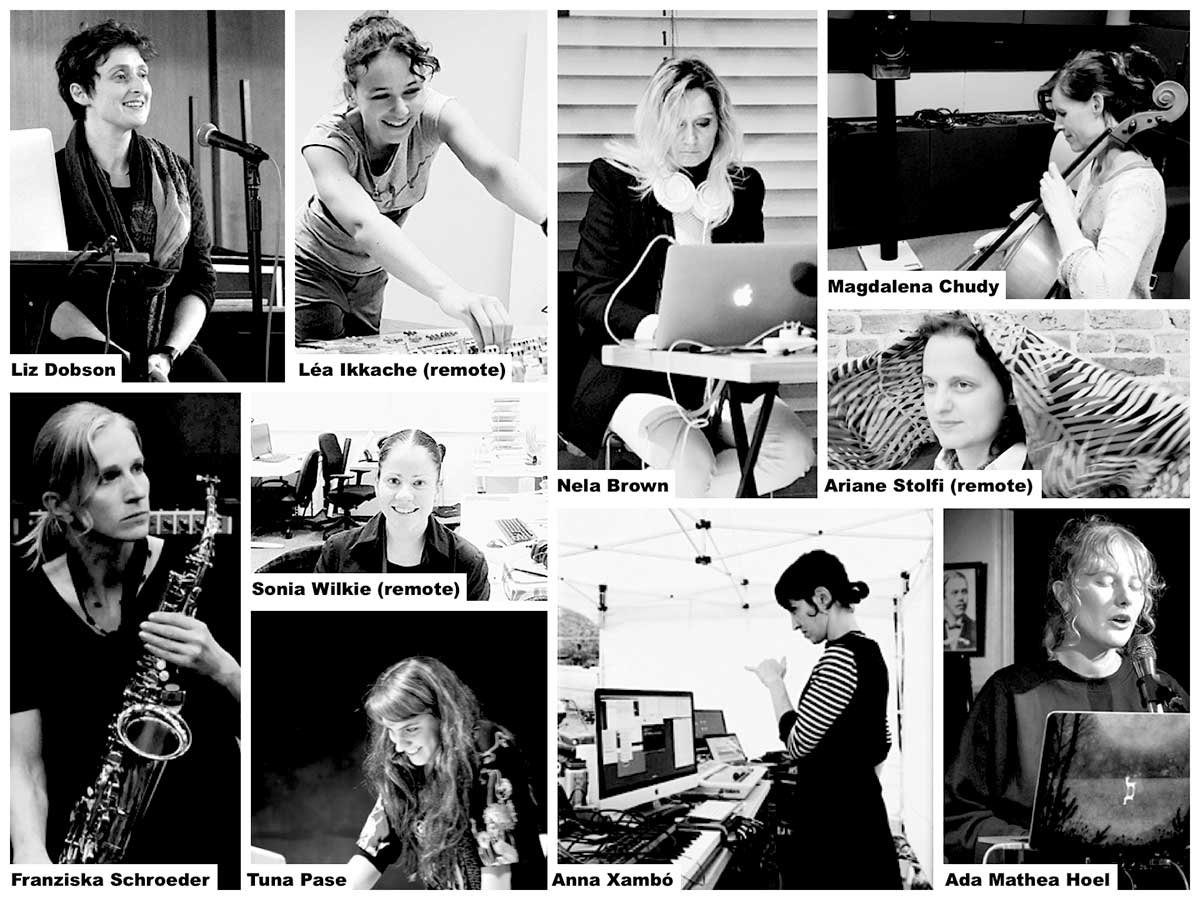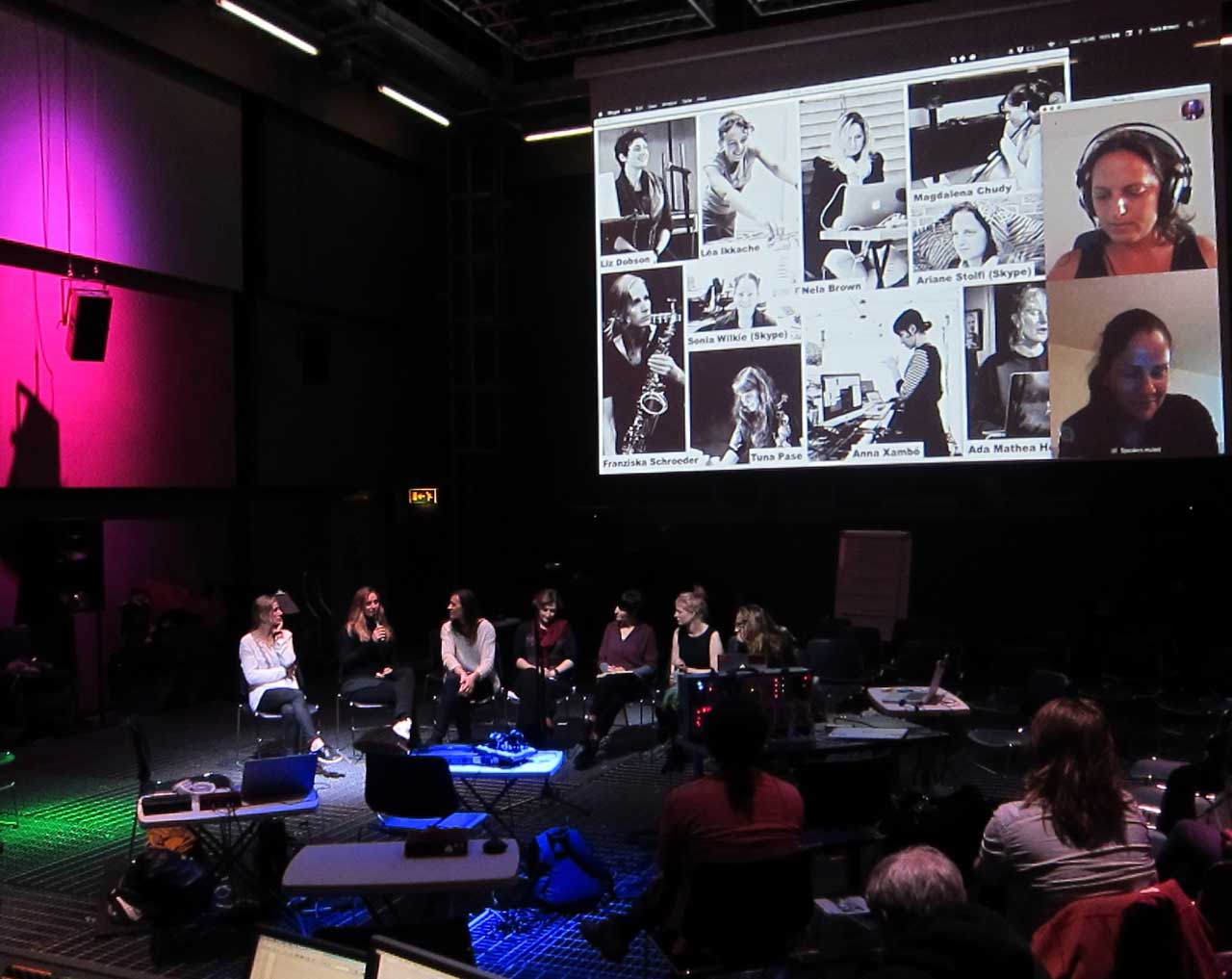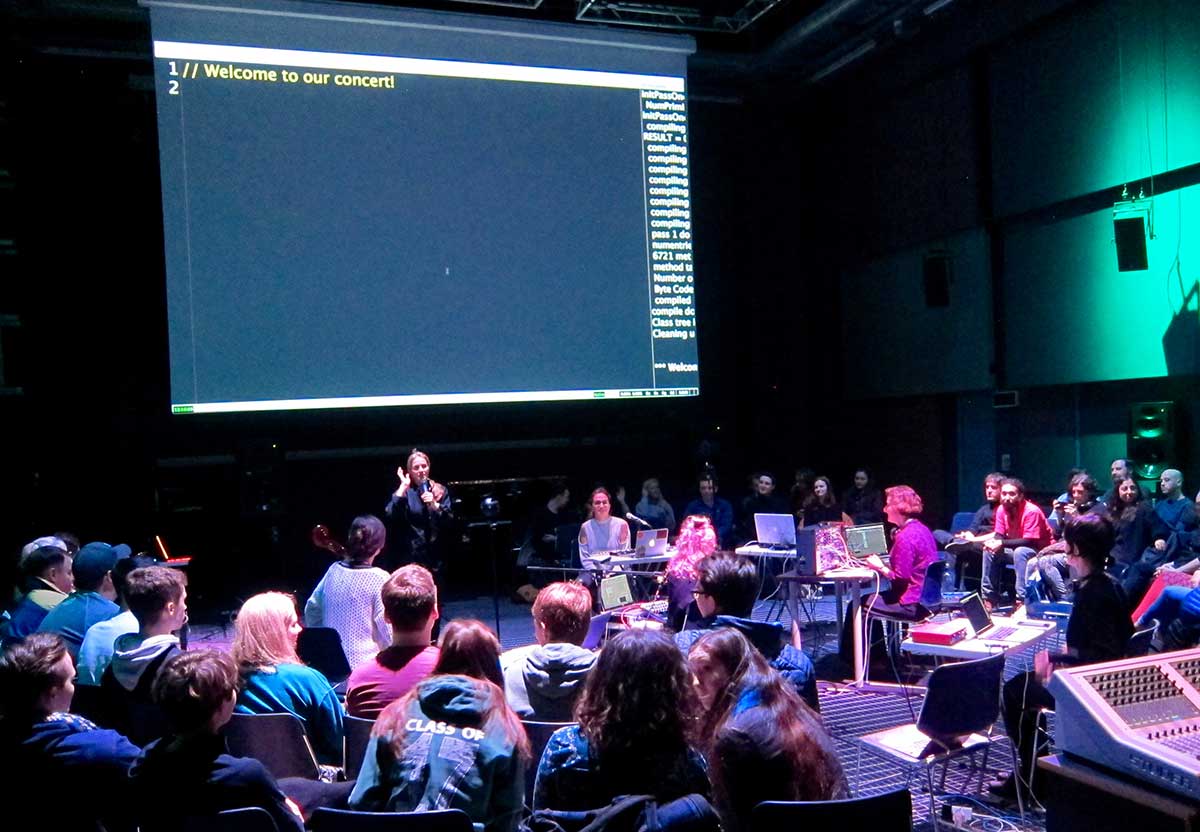Connecting through connection - A new and futuristic way of performing

In November 2018 seven female music technology performers from different parts of the world got together to give a concert and a panel debate at the Sonic Arts Research Centre in Belfast, where we would be staying for one week. The networks represented were: WoNoMute (Norway), Female Laptop Orchestra (UK), Sonora (Brazil) and Yorkshire Sound Women Network (UK).
I was the youngest participant in the group, and the opportunity to meet and perform with more experienced musicians was very inspiring.
The project that brought us together, Transmusicking II, explores performing with co-located and remote musicians who use multiple tools to relay musical information and create music together. This collaboration is a continuation of Transmusicking I, premiered at Audio Mostly 2017 in London.
I’m a Master student at the Music Technology program at NTNU in Trondheim. I was one of only three females in a class of 25 when my Bachelor program started, and now at my level of the Master program I’m the only one. Getting women involved in the music technology field is for some reason a big challenge, and keeping us there is a bigger one, even in Norway, where gender equality generally has come far. Projects like this help young female performers work alongside more experienced women, which we can look up to as role models. In a male-dominated field there is high value in connecting women, empowering them and giving them self confidence.

The first day in Belfast we rigged our equipment up in the 8 channel studio at SARC where we explored the possibilities lying in our combined expertise. We were rehearsing for our Sonic Lab concert 48-channel sound diffusion system three days later. Some of the challenges we faced having remote performers were problematic latency issues, the lack of proper face-to-face communication and finding good rehearsal times with the remote performers due to different time zones. In the studio we were able to practice with test streams from the remote musicians that were also part of the group.
We all had different skill sets to utilize in the performance, and ended up playing a mixture of duos, solos and group improvisations with a set order and set time frames. This was partly to combat some of the potential chaos factors of being a lot of performers on stage in combination with having remote performers that didn’t get live feedback. Doing the performance this way also enabled us to show the individual diversity of the group members as well as the group dynamics.

It felt good to work in a large group without being the only female, but of course we’re still not a homogenous group due to factors like different ages, ethnicities and economic status to name a few. An important aspect of this project is bringing this specific minority, women, together to build networks and supply a safe space to experiment without being afraid of judgement based on gender. Seeing women in all roles within the project was very inspiring to me, and not something I’m accustomed to. Also the visibility of female music technologists for the audience is an important aspect. The possibility of participating in the concert as a remotely located performer enables more people to join disregarding time and money. Organized projects and networks like this are a valuable and growing experience, and can be an important stepping-stone for a young musician’s career.
Links
- Panel: Women in Music Technology around the World with Nela Brown (FLO), Magdalena Chudy (FLO), Liz Dobson (YSWN), Ada Mathea Hoel (WoNoMute), Léa Ikkache (WiMT), Tuna Pase (FLO), Franziska Schroeder (FLO), Ariane Stolfi, (Sonora) Sonia Wilkie (FLO) and Anna Xambó (WoNoMute, WiMT). November 21, 2018. Sonic Arts Research Center, Queen’s University Belfast. Belfast, Northern Ireland.
- “Transmusicking II” with Nela Brown, Magdalena Chudy, Liz Dobson, Ada Hoel, Léa Ikkache, Tuna Pase, Franziska Schroeder, Ariane Stolfi, Sonia Wilkie, Anna Xambó. November 22, 2018. Sonic Arts Research Center, Queen’s University Belfast. Belfast, Northern Ireland.
Acknowledgements
This residency was supported by SARC and WoNoMute. I’d like to give special thanks to Franziska Schroeder and Zeynep Bulut for making this possible. Also, thank you so much to the co-located performers Nela Brown, Magdalena Chudy, Liz Dobson, Tuna Pase, Franziska Schroeder and Anna Xambó, and the remote performers Léa Ikkache, Ariane Stolfi and Sonia Wilkie. Last but not least, thanks to Craig Jackson, David Bird, Matilde Meireles and David Mahaffy for their technical and logistic support.
About the author
Ada Mathea Hoel is a Norwegian noise performer and producer. She’s currently an MA student in the Music Technology program at NTNU, Trondheim, where she’s researching cross-adaptive processing as a production and composition tool.
